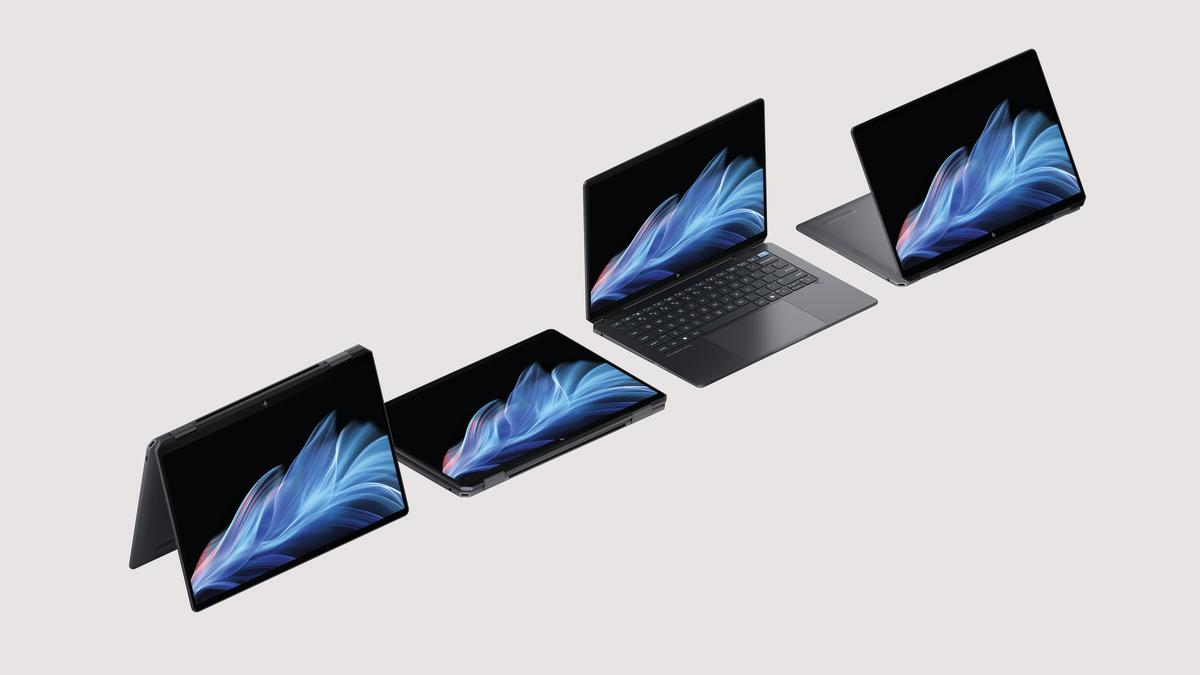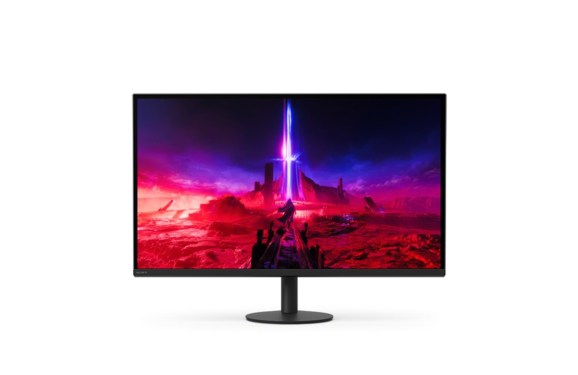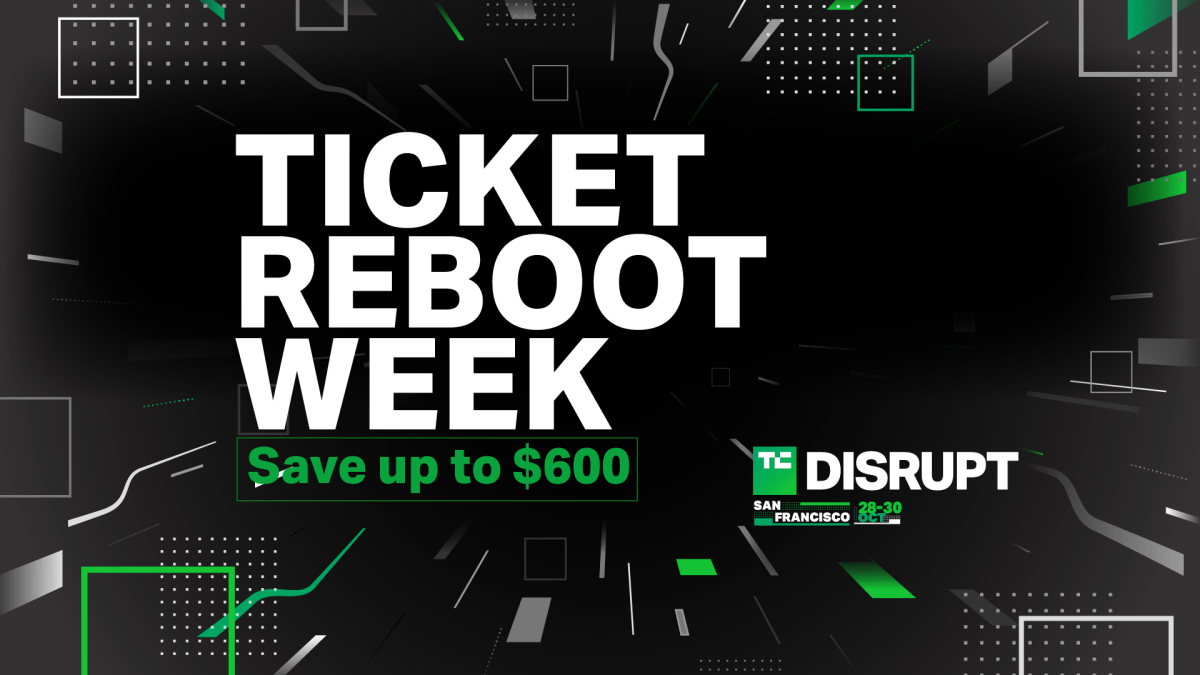Technology
You can finally record videos while playing music on the iPhone

iPhone users who’ve upgraded to iOS 18 now have the option to record videos while audio is playing, as MacRumors spotted. If you’ve got music playing through the iPhone’s speaker, it’s a quick and dirty way to add a soundtrack to a video instead of bringing a clip into an editor, but audio quality does take a hit.
Previously, in older versions of iOS, opening the iPhone’s camera app and switching to video mode would cause any audio playing to quickly fade out, even if it was playing through wireless headphones. With iOS 18, there’s a new camera setting to change that behavior.
To access it, open the iPhone’s settings, navigate to the Camera section, tap on Record Sound, and then turn on the “Allow Audio Playback” toggle. With that activated, audio will continue to play when you’re recording video in the camera app, and if the audio is playing through the speaker, it will be picked up by the iPhone’s microphone and recorded in mono along with the video. If the audio is playing through headphones, it won’t be recorded.
This functionality did exist in older versions of iOS with the camera app’s QuickTake feature, which allows videos to be captured in photo mode by holding down on the shutter button, but the resulting video is limited to a 1440P resolution, instead of the 4K offered through video mode.
Using a video editing app is still the best way to add music or narration to a clip, but this update will make it much easier to record videos with dance moves or lip movements that sync to a specific song.
Science & Environment
OPEC is bullish on long-term oil demand growth. Not everyone agrees
The sun sets beyond crude oil storage tanks at the Juaymah tank farm at Saudi Aramco’s Ras Tanura oil refinery and oil terminal in Ras Tanura, Saudi Arabia, on Monday, Oct. 1, 2018.
Bloomberg | Bloomberg | Getty Images
Global benchmark Brent crude falling below $70 a barrel in early September — its lowest in 33 months — is terrific news for consumers, who will consequently see lower prices at the pump.
It’s also the stuff of nightmares for OPEC+, for whom oil revenues are critical.
The oil producer alliance led by Saudi Arabia earlier this month decided to delay oil production hikes for two additional months in an effort to shore up prices, but so far to no avail. Low global demand forecasts, coupled with new oil supply coming from non-OPEC countries, spell a long period of subdued crude prices.
It’s led some in the market to ask the question: Have we officially reached “peak oil”? Has demand growth hit its apex, and is it just downhill from here?
By the forecasts of OPEC itself, that’s a hard no.
The oil producer group’s 2024 World Oil Outlook report, released Tuesday, predicts strong energy demand growth of 24% globally between now and 2050. It also forecasts “robust medium-term growth” in oil demand reaching 112.3 million barrels per day in 2029, an increase of 10.1 million barrels per day compared to 2023.
A fair number of energy analysts appear to disagree with that calculation — not least those at the International Energy Agency. The Paris-based agency sees demand actually leveling off by the end of the decade to around 106 million barrels per day, according to its annual mid-term outlook published in June. The IEA still sees global oil demand rising; it just forecasts a smaller rise, and expects it to peak by the end of the decade.

The battle of the forecasts between OPEC and the IEA has gained publicity in recent years, with the latter organization pushing hard for a net-zero future.
S&P Global Commodity Insights, meanwhile, sees the medium-term future as somewhere in between, with demand reaching a peak of 109 million barrels per day in 2034 and gradually declining to fall below 100 million barrels per day in 2050.
OPEC, by contrast, sees demand hitting a whopping 120 million barrels per day by 2050.
All parties agree that demand will fall in the developing world, while rising in emerging markets led by India.
The medium-term outlook
As for the near-to-medium term outlook, analysts are bearish on oil demand and prices. This is despite the early September announcement by OPEC+ that the group would be extending its crude production cuts into December in an attempt to limit market supply.
“That two month extra time hasn’t convinced anybody who’s skeptical about the market that that’s going to do much to shore up prices,” Dave Ernsberger, head of market reporting at S&P Global Commodity Insights, told CNBC.
“So that’s the in-the-moment issue. But the much bigger issue is, existentially speaking, are we moving past the moment of peak oil demand?”
Ernsberger pointed to the growth of alternative energy forms, including the increasing use of biofuels in the maritime industry.
“What we’re moving into is an era of post-demand growth. It’s not a post-oil moment, but it’s a post-growth moment. And how does OPEC+, how does the market readjust to a world of low or no growth in demand overall?”

Price increase prospects are also dimmed by China, the world’s largest oil importer, which has put itself on a dedicated path to electrification.
“The biggest threats to higher prices for OPEC+ are external,” Li-Chen Sim, a non-resident scholar at the Washington-based Middle East Institute, told CNBC.
Those are chiefly “lackluster demand, especially from China, oil supply from non-OPEC+ sources, and internal; some members are producing more than assigned quotas.”
Estimates by international and Chinese sources show a slowing demand for oil and refined products in China, Sim said.
That is in part due to slowing Chinese economic growth of around 3% to 5% annually in recent years — still better than many other countries, she noted.
“But there’s also a structural element to the reduction in oil consumption, driven by a conscious effort to reduce its high dependence on oil (and gas) imports, and expressed in policies such as electric vehicle uptake and encouraging expansion of renewable and nuclear power,” Sim added.
In the near term, OPEC+ is still expected to bring some production back in December, several countries in the alliance are producing beyond their quotas, and more supply is coming onto the market from non-OPEC+ producers like the U.S., Guyana, Brazil, and Canada.
“It’s difficult to see prices moving much higher from here as long as that threat is out there in the market to bring those supplies back,” Ernsberger said.
In the much longer term, the eventual decline of the oil era – if it happens – will be brought on due to changing demand rather than dwindling supply, many analysts argue.
It was the late Saudi Sheikh Ahmed Zaki Yamani who said in 2000: “The Stone Age came to an end not for a lack of stones and the Oil Age will end, but not for a lack of oil.”
Technology
The Galaxy S24 FE was (accidentally) put on pre-order early

We’re only a few days away from being able to order the upcoming Samsung Galaxy S24 FE. This is the company’s next premium mid-range phone that will pretty much provide a flagship-level experience. Well, it looks like some Samsung employee wanted to get the fun started early. Samsung accidentally put the upcoming Galaxy S24 FE on pre-order early.
This might not be possible for long, as the company is likely to eventually take it down. Since we’re talking about the official Samsung site offering the pre-order, it confirms the specs that we’ve been hearing rumors about along with the price.
Samsung accidentally put the Galaxy S24 FE on pre-order
These things happen, and they sometimes ruin the surprise. However, it’s still interesting that Samsung would make such an oopsie. The pre-order went into effect on the U.S. Samsung site. On the site, we see the typical pre-ordering process with the option to bring the price down with a trade-in.
Speaking of the price, this leak confirmed that this phone will start at $650. This is for the base 128GB variant. Bumping the storage up to 256GB boosts the price up to $709.99. If you have the Galaxy S23 FE, you’ll be able to trade it in and knock the price down to $269.99 for the 128GB variant. If you have the 256GB variant, it will knock the price down to $309.99.
As for the specs, the page doesn’t dive deeply into the specs. The phone has a 6.7-inch display, which is fairly large. Also, there’s a 10MP main camera on the back. As for the processor, this phone will use the Samsung Exynos 2400e SoC.
AI, of course
We also can’t forget about Galaxy AI. This phone will come with, at least some of, the powerful AI tools in the Galaxy AI platform. These include text generation, image generation, translation tools, and more. We don’t know if it will be 1:1 with current Galaxy flagships on the market.
The Galaxy S24 FE will come in four colors: Blue, Graphite, Gray, and mint. These are pretty typical colors, but we’re missing the trademark Purple color that we got last year.
There will be some exclusive offers that you can capitalize on. These are 50% off of a pair of Galaxy Buds FE, 50% off of a pair of Galaxy Buds 3, and 50% off of a Galaxy Watch FE.
If you’re excited about this phone, then look out for its official launch in a couple of days. We’re not sure that if you order today, you’ll get your order early.
Technology
New Grafana Labs features aim to simplify observability

Grafana Labs on Tuesday unveiled a series of new features aimed at simplifying the oversight of data and IT processes, including Explore Apps that enable customers streamline exploration and an automated tool that targets cost reduction by identifying usage patterns.
In addition, the vendor introduced new capabilities that enable customers to monitor the performance of machine learning projects and the large language models used to train AI models and applications.
Collectively, the new features accomplish Grafana Labs’ goal of making its platform easier to use, according to Torsten Volk, an analyst at TechTarget’s Enterprise Strategy Group.
“These latest updates simplify the adoption of Grafana’s observability platform by a wider range of user roles,” he said. “Many of the new features and capabilities allow less experienced or simply less technical users to monitor and troubleshoot cloud native apps and multi-cloud environments within a business context.”
In addition, the new capabilities further Grafana Labs’ evolution from a vendor of data visualization software for time series data to a complete observability specialist, Volk continued.
“Their initial claim to fame was the flexibility of their dashboard interface and their ability to query and visualize data from basically any source,” he said. “This turns Grafana into a serious contender in the observability space.”
Based in New York City, Grafana Labs is an open source vendor.. Using its tools, customers can monitor metrics to track the performance of various data management and IT operations.
The vendor’s LGTM stack includes Loki for logs to keep track of metric performance, Grafana for dashboards to easily view metrics, Tempo to monitor applications for failures and Mimir to provide access to the open source Prometheus platform’s capabilities for overseeing microservices and containers.
To date, Grafana Labs has raised over $800 million in funding, including $270 million in August 2024 and $240 million in April 2022.
Competitors include Datadog, Dynatrace and Splunk.
OpenAI’s launch of ChatGPT nearly two years ago led to an explosion of enterprise interest in developing AI models and applications.
Generative AI has the potential to help businesses by enabling non-technical employees to work with data through true natural language processing as well as make technical experts more efficient by reducing repetitive tasks and automating previously manual processes. To benefit from generative AI, developers need to combine the capabilities of either public large language models (LLMs) such as ChatGPT and Google Gemini or internally developed smaller language models with their organization’s proprietary data. Developers can then train AI models and applications that understand their organization to respond to queries about its operations as well as take over tasks such as data discovery and data observability that were previously done by data engineers and other data experts.
In response, Grafana Labs developed a feature that enables customers to track the performance of LLMs, including latency and cost. The tool uses open source tools to observe LLMs and sends its findings to Grafana Cloud where they can be visualized using the vendor’s AI observability capabilities.
In addition, as enterprises develop more AI and machine learning tools, Grafana Labs worked with design partner Nvidia to develop a tool to observe machine learning experiments by tracking certain model metrics and developed GPU monitoring capabilities to help developers better understand their workloads.
Beyond new tools for monitoring AI-related processes, significant new features unveiled by Grafana Labs include Adaptive Logs and new root cause analysis capabilities resulting from the vendor’s November 2023 acquisition of Asserts.ai. Adaptive Logs are an automated tool now generally available that aims to lower observability costs by identifying log file patterns and creating customized recommendations so that users can retain important log file patterns and eliminate unnecessary ones.
“The cost of ingesting, processing, and storing telemetry data is one of the biggest pain points in observability today,” Volk said. “It is exciting to see Grafana attack this challenge head on by pruning telemetry data based on its predictive value.”
Meanwhile, using the technology inherited with its acquisition of Asserts.ai, Grafana Labs unveiled a set of AI and machine learning-based tools that automate anomaly detection within applications and infrastructure systems and provide troubleshooting recommendations.
“This … is a key capability that helps organizations lower operations cost by focusing on what really matters,” Volk said. “By filtering out noise and surfacing actionable insights, engineers can resolve incidents faster, reducing downtime and improving reliability.” While Volk highlighted Adaptive Logs and root cause analysis, Tom Wilkie, Grafana Labs’ chief technology officer, called out Explore Apps as an important addition to the Grafana Labs platform.
Explore Apps are prebuilt user interfaces that enable users to query data without having to know query languages such as PromQL, LogQL, or TraceQL.
With the collective goal of the new features being to simplify using Grafana Labs’ observability platform and to help new users quickly and easily get started with its use, Explore Apps directly address ease of use.
The first Explore Apps were Explore Metrics and Explore Logs. Now, Grafana Labs is adding Explore Traces and Explore Profiles, both of which are in public preview. “Our Explore Apps are designed to make data exploration and analysis more accessible and user-friendly, Wilkie said. ” These tools help junior [site reliability engineers] and developers perform at the same level as someone with decades of experience. I think it’s going to help a lot of teams resolve issues faster and overall become more efficient.”
Additional new Grafana Labs features — among others — include the following:
While the goal of many of the new features is to simplify querying and analyzing observability data, the impetus for developing them came from customer feedback in concert with Grafana Labs’ market observations, according to Wilkie.
One key observation has been a heightened emphasis on cost control. For example, Adaptive Logs is among the tools the vendor developed to help customers manage their IT spending.
“We know companies can’t simply get rid of their observability stack, so we’re making it more cost-effective for them without losing any functionality,” Wilkie said. Just as many of Grafana Labs’ new features center on making its platform easier to use, the vendor’s near-term roadmap is focused on further simplifying the platform to appeal to a broader audience of users, according to Wilkie.
After its founding in 2014, Grafana Labs focused on open source dashboarding that enabled users to visualize observability data from nearly 200 sources. Four years later, the vendor added Loki, Tempo and Mimir to its platform to offer more complete observability capabilities.
Now, Grafana Labs’ aim is adding features such infrastructure observability, reliability testing, incident response management and application observability.
“Now, we’re in Act III, focused on bringing our observability technologies to a mainstream audience,” Wilkie said. “That’s where you’ll continue to see a lot of innovation from us in the next six to 12 months.” Volk, meanwhile, suggested Grafana Labs add more role-based features to enable users such as developers, administrators and security experts to collaborate as they detect and address problems.
In addition, the vendor could add more machine learning capabilities to automate more of the observability process, he continued.
“Grafana needs to continue to double down on providing role-specific capabilities to proactively detect, optimize, and — eventually — automatically address issues,” Volk said. “The platform needs to … accumulate and retain the lessons learned from solving these issues as the basis for future automated issues resolution.”
Eric Avidon is a senior news writer for TechTarget Editorial and a journalist with more than 25 years of experience. He covers analytics and data management.New capabilities
Plans
Technology
HP’s Omnibook Ultra Flip 14-inch is its first 2-in-1 AI PC

On Tuesday, HP unveiled its first 2-in-1 AI PC, the OmniBook Ultra Flip 14-inch. The device has a 3K OLED display, a haptic touchpad and Intel’s 200V Core Ultra series processors with a dedicated AI engine. Starting in late November, the PC will get Microsoft’s Copilot+ capabilities as an update.
The OmniBook Ultra Flip 14-inch has a 2,880 x 1,800 touch-sensitive OLED display with a maximum 120Hz variable refresh rate. With a 90 percent screen-to-body ratio, the PC is only 0.59 inches (15mm) thick and weighs 2.97 lbs (1.35kg).
The OmniBook Ultra Flip 14-inch starts at 512GB of storage, with 1TB and 2TB options also available. 16GB of RAM is standard, but more expensive tiers will boost that to 32GB. The 2-in-1 is rated for up to 20 hours of battery life, and it can fast-charge to about 50 percent in 45 minutes using its bundled 65W USB-C adapter. Its Intel AI processor can be configured with anything from an Ultra 5 226V up to an Ultra 9 288V.
The device includes a 9MP camera with hardware-level low-light adjustments and Auto Switch HDR, which determines when HDR is needed (based on lighting conditions) and switches on the fly. Onboard AI features using the Intel chip’s NPU include hand gesture support for scrolling through documents or webpages, adjusting volume levels and controlling media playback. The PC can also automatically lock when you leave and wake when you return.
Once the Copilot+ update for Intel PCs is available, features like AI image generation and editing tools, live captions, Windows Studio effects, and Recall will be added.
The HP OmniBook Ultra Flip 14-inch is available today on HP’s website. It starts at $1,450.
Technology
Sony Electronics lines up new InZone monitors for gamers


Sony Electronics unveiled today two new Inzone monitors aimed at gamers, with a focus on everyone from casual players to esports pros.Read More
Technology
4 days left to save up to $600 on Disrupt 2024 passes

Time is running out to grab savings of up to $600 on individual tickets for TechCrunch Disrupt 2024! This limited-time offer ends on September 27 at 11:59 p.m. PT, so now’s your last opportunity to score a great deal before the final countdown begins.
Disrupt 2024 is the ultimate gathering for the startup world. From October 28-30 at Moscone West in San Francisco, you’ll be among 10,000 tech innovators, startup founders, and VC leaders. With 200+ sessions, 250+ expert speakers, and endless networking opportunities, this is the place to be for anyone serious about shaping the future of tech.
Don’t miss out — grab your Disrupt 2024 ticket now and save big!
Reasons to attend Disrupt 2024
Gain priceless insights from over 250 industry leaders in startups and venture capital. Across six dynamic stages, you’ll explore AI, SaaS, fintech, space, and more.
Hear from industry heavyweights like Alex Pall and Drew Taggart of The Chainsmokers, co-founders of MANTIS Venture Capital; Bridgit Mendler, CEO of Northwood Space; Colin Kaepernick, founder and CEO of Lumi; Denise Dresser, CEO of Slack; Erin and Sara Foster, co-founders of Oversubscribed Ventures; Mary Barra, chair and CEO of General Motors; and many more distinguished leaders.
Participate in more than 200 Roundtable and Breakout Sessions, tailored to promote meaningful engagement and collaboration with your peers, focusing on the pressing challenges encountered by today’s entrepreneurs.
Make the most of countless networking opportunities, from the lively Expo Hall to intimate 1:1 or small group Braindates, plus a variety of Side Events during “Disrupt Week.”
Witness the intense startup battle
Be sure to catch one of Disrupt’s thrilling highlights: Startup Battlefield 200. The top 200 pre-Series A startups will take the stage to pitch their innovations to an elite panel of VC judges, with the winner earning a $100,000 equity-free prize and the coveted Disrupt Cup.
Our esteemed panel of judges is composed of prominent VC leaders who will share their expertise and feedback, using their criteria to evaluate the viability of each company:
- Alice Brooks, Partner, Khosla Ventures
- Christine Esserman, Partner, Accel
- Erin Harkless Moore, Managing Director, Pivotal Ventures
- Haomiao Huang, Founding Partner, Matter Venture Partners
- Jonathan Rosenbaum, Managing Director, Insight Partners
- Mark Crane, Partner, General Catalyst
- Sangeen Zeb, General Partner, Google Ventures
- Sharon Winter, Vice President, Atomic
- Sofia Dolfe, Partner, Index Ventures
- Victor Lazarte, General Partner, Benchmark
- And many more
Catch the final sale before the countdown to Disrupt 2024
Only 4 days left to enjoy savings of up to $600 on individual ticket types! This is your final chance to grab big discounts before the countdown to Disrupt 2024 kicks off.
Go here to grab your massive ticket savings before time runs out.
-

 Womens Workouts22 hours ago
Womens Workouts22 hours ago3 Day Full Body Women’s Dumbbell Only Workout
-

 News6 days ago
News6 days agoYou’re a Hypocrite, And So Am I
-

 Sport5 days ago
Sport5 days agoJoshua vs Dubois: Chris Eubank Jr says ‘AJ’ could beat Tyson Fury and any other heavyweight in the world
-

 Technology6 days ago
Technology6 days agoWould-be reality TV contestants ‘not looking real’
-

 News2 days ago
News2 days agoOur millionaire neighbour blocks us from using public footpath & screams at us in street.. it’s like living in a WARZONE – WordupNews
-

 Science & Environment5 days ago
Science & Environment5 days ago‘Running of the bulls’ festival crowds move like charged particles
-

 Science & Environment6 days ago
Science & Environment6 days agoHow to unsnarl a tangle of threads, according to physics
-

 CryptoCurrency5 days ago
CryptoCurrency5 days agoEthereum is a 'contrarian bet' into 2025, says Bitwise exec
-

 Science & Environment6 days ago
Science & Environment6 days agoLiquid crystals could improve quantum communication devices
-

 CryptoCurrency5 days ago
CryptoCurrency5 days agoDZ Bank partners with Boerse Stuttgart for crypto trading
-

 CryptoCurrency5 days ago
CryptoCurrency5 days agoBitcoin bulls target $64K BTC price hurdle as US stocks eye new record
-

 Science & Environment5 days ago
Science & Environment5 days agoQuantum ‘supersolid’ matter stirred using magnets
-

 Science & Environment6 days ago
Science & Environment6 days agoMaxwell’s demon charges quantum batteries inside of a quantum computer
-

 Science & Environment5 days ago
Science & Environment5 days agoSunlight-trapping device can generate temperatures over 1000°C
-

 Science & Environment6 days ago
Science & Environment6 days agoHow to wrap your mind around the real multiverse
-

 CryptoCurrency5 days ago
CryptoCurrency5 days agoDorsey’s ‘marketplace of algorithms’ could fix social media… so why hasn’t it?
-

 Science & Environment6 days ago
Science & Environment6 days agoWhy this is a golden age for life to thrive across the universe
-

 Health & fitness6 days ago
Health & fitness6 days agoThe secret to a six pack – and how to keep your washboard abs in 2022
-

 Science & Environment6 days ago
Science & Environment6 days agoLaser helps turn an electron into a coil of mass and charge
-

 Science & Environment6 days ago
Science & Environment6 days agoITER: Is the world’s biggest fusion experiment dead after new delay to 2035?
-

 CryptoCurrency5 days ago
CryptoCurrency5 days agoBitcoin miners steamrolled after electricity thefts, exchange ‘closure’ scam: Asia Express
-

 CryptoCurrency5 days ago
CryptoCurrency5 days agoCardano founder to meet Argentina president Javier Milei
-

 CryptoCurrency5 days ago
CryptoCurrency5 days agoLow users, sex predators kill Korean metaverses, 3AC sues Terra: Asia Express
-

 CryptoCurrency5 days ago
CryptoCurrency5 days agoSEC asks court for four months to produce documents for Coinbase
-

 CryptoCurrency5 days ago
CryptoCurrency5 days agoBlockdaemon mulls 2026 IPO: Report
-

 News5 days ago
News5 days agoIsrael strikes Lebanese targets as Hizbollah chief warns of ‘red lines’ crossed
-

 Sport5 days ago
Sport5 days agoUFC Edmonton fight card revealed, including Brandon Moreno vs. Amir Albazi headliner
-

 Science & Environment5 days ago
Science & Environment5 days agoHyperelastic gel is one of the stretchiest materials known to science
-

 Technology5 days ago
Technology5 days agoiPhone 15 Pro Max Camera Review: Depth and Reach
-

 Science & Environment5 days ago
Science & Environment5 days agoQuantum forces used to automatically assemble tiny device
-

 News5 days ago
News5 days agoBrian Tyree Henry on voicing young Megatron, his love for villain roles
-

 Science & Environment6 days ago
Science & Environment6 days agoTime travel sci-fi novel is a rip-roaringly good thought experiment
-

 Science & Environment6 days ago
Science & Environment6 days agoNerve fibres in the brain could generate quantum entanglement
-

 Science & Environment5 days ago
Science & Environment5 days agoPhysicists are grappling with their own reproducibility crisis
-

 Science & Environment5 days ago
Science & Environment5 days agoNuclear fusion experiment overcomes two key operating hurdles
-

 CryptoCurrency5 days ago
CryptoCurrency5 days ago2 auditors miss $27M Penpie flaw, Pythia’s ‘claim rewards’ bug: Crypto-Sec
-

 CryptoCurrency5 days ago
CryptoCurrency5 days agoJourneys: Robby Yung on Animoca’s Web3 investments, TON and the Mocaverse
-

 CryptoCurrency5 days ago
CryptoCurrency5 days ago$12.1M fraud suspect with ‘new face’ arrested, crypto scam boiler rooms busted: Asia Express
-

 CryptoCurrency5 days ago
CryptoCurrency5 days agoRedStone integrates first oracle price feeds on TON blockchain
-

 CryptoCurrency5 days ago
CryptoCurrency5 days agoVitalik tells Ethereum L2s ‘Stage 1 or GTFO’ — Who makes the cut?
-

 Womens Workouts3 days ago
Womens Workouts3 days agoBest Exercises if You Want to Build a Great Physique
-

 Womens Workouts3 days ago
Womens Workouts3 days agoEverything a Beginner Needs to Know About Squatting
-

 Science & Environment2 days ago
Science & Environment2 days agoMeet the world's first female male model | 7.30
-

 News5 days ago
News5 days agoChurch same-sex split affecting bishop appointments
-

 Politics5 days ago
Politics5 days agoLabour MP urges UK government to nationalise Grangemouth refinery
-

 Science & Environment5 days ago
Science & Environment5 days agoHow one theory ties together everything we know about the universe
-

 Science & Environment6 days ago
Science & Environment6 days agoQuantum time travel: The experiment to ‘send a particle into the past’
-

 CryptoCurrency5 days ago
CryptoCurrency5 days agoHelp! My parents are addicted to Pi Network crypto tapper
-

 Science & Environment5 days ago
Science & Environment5 days agoFuture of fusion: How the UK’s JET reactor paved the way for ITER
-

 CryptoCurrency5 days ago
CryptoCurrency5 days agoSEC sues ‘fake’ crypto exchanges in first action on pig butchering scams
-

 CryptoCurrency5 days ago
CryptoCurrency5 days agoCertiK Ventures discloses $45M investment plan to boost Web3
-

 CryptoCurrency5 days ago
CryptoCurrency5 days agoVonMises bought 60 CryptoPunks in a month before the price spiked: NFT Collector
-

 CryptoCurrency5 days ago
CryptoCurrency5 days ago‘Silly’ to shade Ethereum, the ‘Microsoft of blockchains’ — Bitwise exec
-

 CryptoCurrency5 days ago
CryptoCurrency5 days ago‘No matter how bad it gets, there’s a lot going on with NFTs’: 24 Hours of Art, NFT Creator
-
Business5 days ago
Thames Water seeks extension on debt terms to avoid renationalisation
-
Business5 days ago
How Labour donor’s largesse tarnished government’s squeaky clean image
-

 News5 days ago
News5 days agoBrian Tyree Henry on voicing young Megatron, his love for villain roles
-

 CryptoCurrency5 days ago
CryptoCurrency5 days agoCoinbase’s cbBTC surges to third-largest wrapped BTC token in just one week
-

 News3 days ago
News3 days agoBangladesh Holds the World Accountable to Secure Climate Justice
-

 Politics7 days ago
Politics7 days agoTrump says he will meet with Indian Prime Minister Narendra Modi next week
-

 Technology5 days ago
Technology5 days agoFivetran targets data security by adding Hybrid Deployment
-

 Money6 days ago
Money6 days agoWhat estate agents get up to in your home – and how they’re being caught
-

 Science & Environment5 days ago
Science & Environment5 days agoA new kind of experiment at the Large Hadron Collider could unravel quantum reality
-

 Fashion Models5 days ago
Fashion Models5 days agoMixte
-

 News6 days ago
News6 days ago▶️ Media Bias: How They Spin Attack on Hezbollah and Ignore the Reality
-

 News6 days ago
News6 days agoRoad rage suspects in custody after gunshots, drivers ramming vehicles near Boise
-

 CryptoCurrency5 days ago
CryptoCurrency5 days agoCrypto scammers orchestrate massive hack on X but barely made $8K
-

 Science & Environment5 days ago
Science & Environment5 days agoUK spurns European invitation to join ITER nuclear fusion project
-

 Science & Environment5 days ago
Science & Environment5 days agoWhy we need to invoke philosophy to judge bizarre concepts in science
-

 Science & Environment5 days ago
Science & Environment5 days agoHow do you recycle a nuclear fusion reactor? We’re about to find out
-

 CryptoCurrency5 days ago
CryptoCurrency5 days agoElon Musk is worth 100K followers: Yat Siu, X Hall of Flame
-

 CryptoCurrency5 days ago
CryptoCurrency5 days agoBitcoin price hits $62.6K as Fed 'crisis' move sparks US stocks warning
-

 CryptoCurrency5 days ago
CryptoCurrency5 days agoCZ and Binance face new lawsuit, RFK Jr suspends campaign, and more: Hodler’s Digest Aug. 18 – 24
-

 CryptoCurrency5 days ago
CryptoCurrency5 days agoBeat crypto airdrop bots, Illuvium’s new features coming, PGA Tour Rise: Web3 Gamer
-

 CryptoCurrency5 days ago
CryptoCurrency5 days agoTelegram bot Banana Gun’s users drained of over $1.9M
-

 CryptoCurrency5 days ago
CryptoCurrency5 days agoEthereum falls to new 42-month low vs. Bitcoin — Bottom or more pain ahead?
-

 CryptoCurrency5 days ago
CryptoCurrency5 days agoETH falls 6% amid Trump assassination attempt, looming rate cuts, ‘FUD’ wave
-
Politics5 days ago
The Guardian view on 10 Downing Street: Labour risks losing the plot | Editorial
-

 Politics5 days ago
Politics5 days agoI’m in control, says Keir Starmer after Sue Gray pay leaks
-
Politics5 days ago
‘Appalling’ rows over Sue Gray must stop, senior ministers say | Sue Gray
-
Business5 days ago
UK hospitals with potentially dangerous concrete to be redeveloped
-

 News5 days ago
News5 days ago“Beast Games” contestants sue MrBeast’s production company over “chronic mistreatment”
-

 News5 days ago
News5 days agoSean “Diddy” Combs denied bail again in federal sex trafficking case
-

 CryptoCurrency5 days ago
CryptoCurrency5 days agoBitcoin options markets reduce risk hedges — Are new range highs in sight?
-

 Money5 days ago
Money5 days agoBritain’s ultra-wealthy exit ahead of proposed non-dom tax changes
-

 Womens Workouts4 days ago
Womens Workouts4 days agoHow Heat Affects Your Body During Exercise
-

 Womens Workouts4 days ago
Womens Workouts4 days agoKeep Your Goals on Track This Season
-

 Womens Workouts4 days ago
Womens Workouts4 days agoWhich Squat Load Position is Right For You?
-

 News2 days ago
News2 days agoWhy Is Everyone Excited About These Smart Insoles?
-

 News2 days ago
News2 days agoFour dead & 18 injured in horror mass shooting with victims ‘caught in crossfire’ as cops hunt multiple gunmen
-

 Womens Workouts21 hours ago
Womens Workouts21 hours ago3 Day Full Body Toning Workout for Women
-

 News5 days ago
News5 days agoPolice chief says Daniel Greenwood 'used rank to pursue junior officer'
-

 Science & Environment6 days ago
Science & Environment6 days agoElon Musk’s SpaceX contracted to destroy retired space station
-
Politics7 days ago
Starmer ally Hollie Ridley appointed as Labour general secretary | Labour
-

 Technology1 week ago
Technology1 week ago‘The dark web in your pocket’
-

 Business1 week ago
Business1 week agoGuardian in talks to sell world’s oldest Sunday paper
-
News5 days ago
Freed Between the Lines: Banned Books Week
-

 MMA5 days ago
MMA5 days agoUFC’s Cory Sandhagen says Deiveson Figueiredo turned down fight offer
-

 MMA5 days ago
MMA5 days agoDiego Lopes declines Movsar Evloev’s request to step in at UFC 307
-

 Science & Environment5 days ago
Science & Environment5 days agoHow to wrap your head around the most mind-bending theories of reality

You must be logged in to post a comment Login